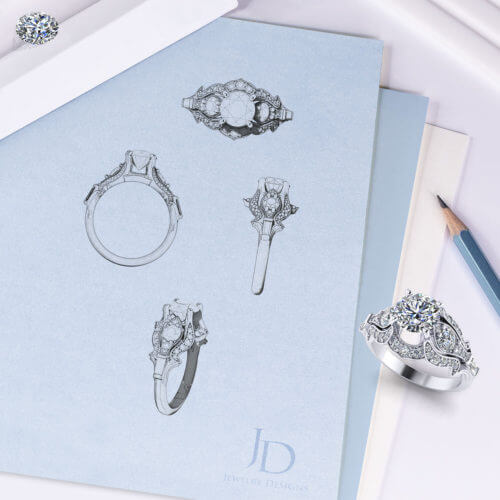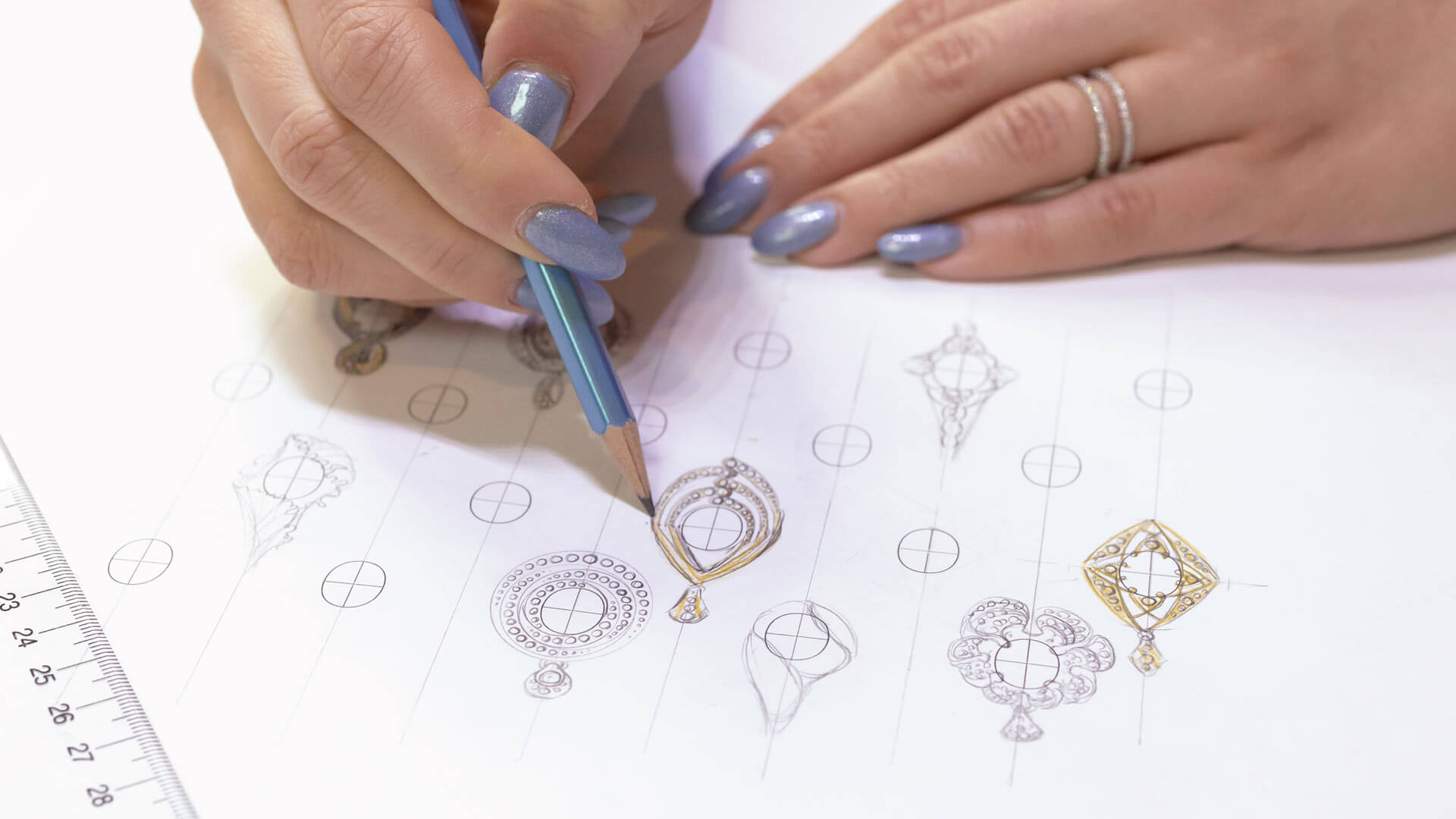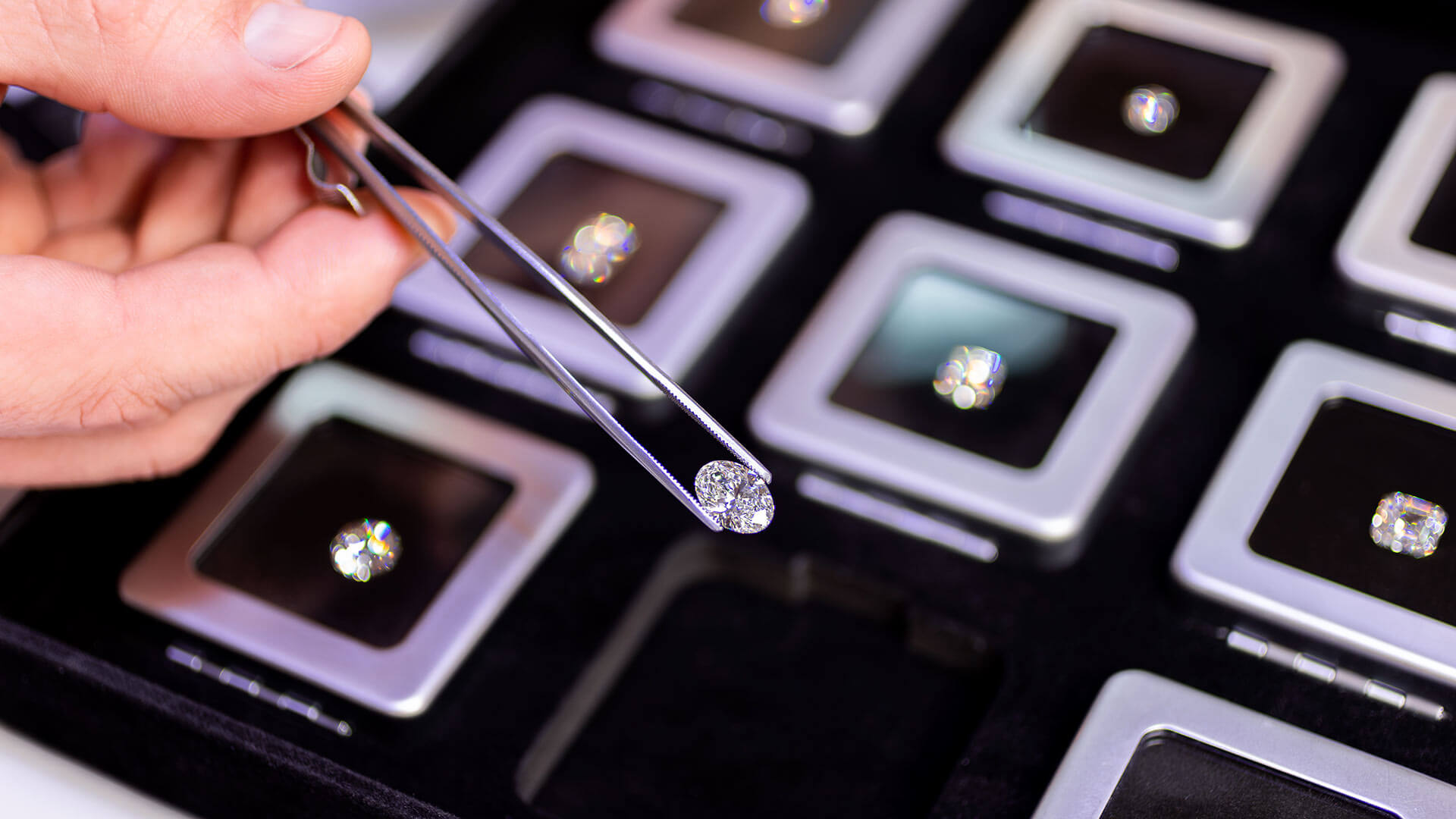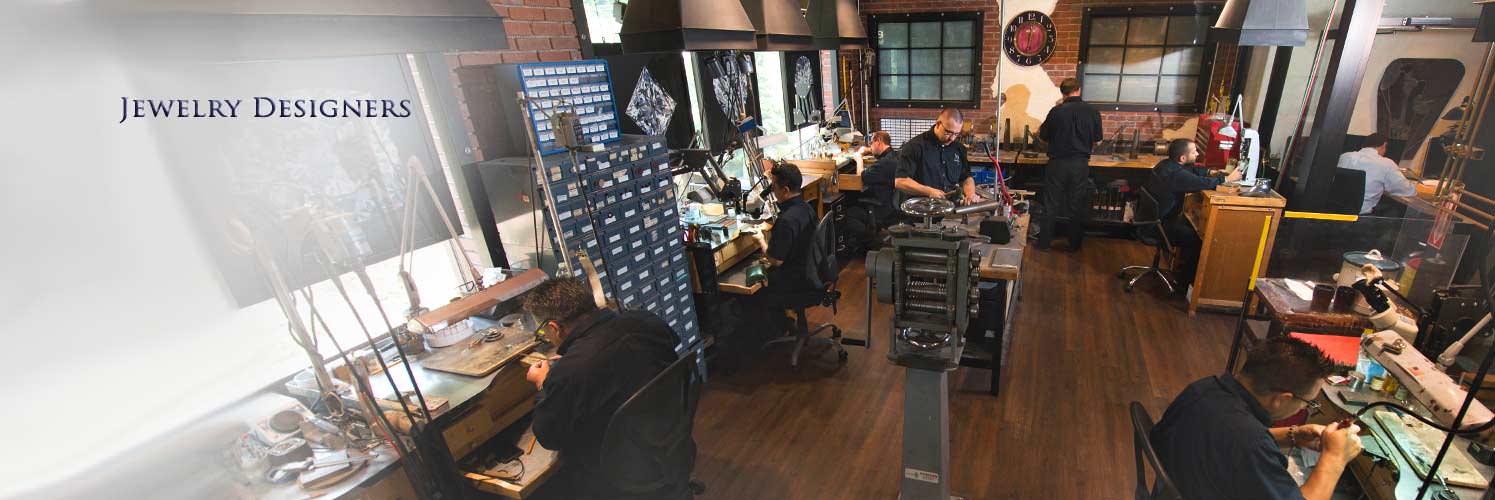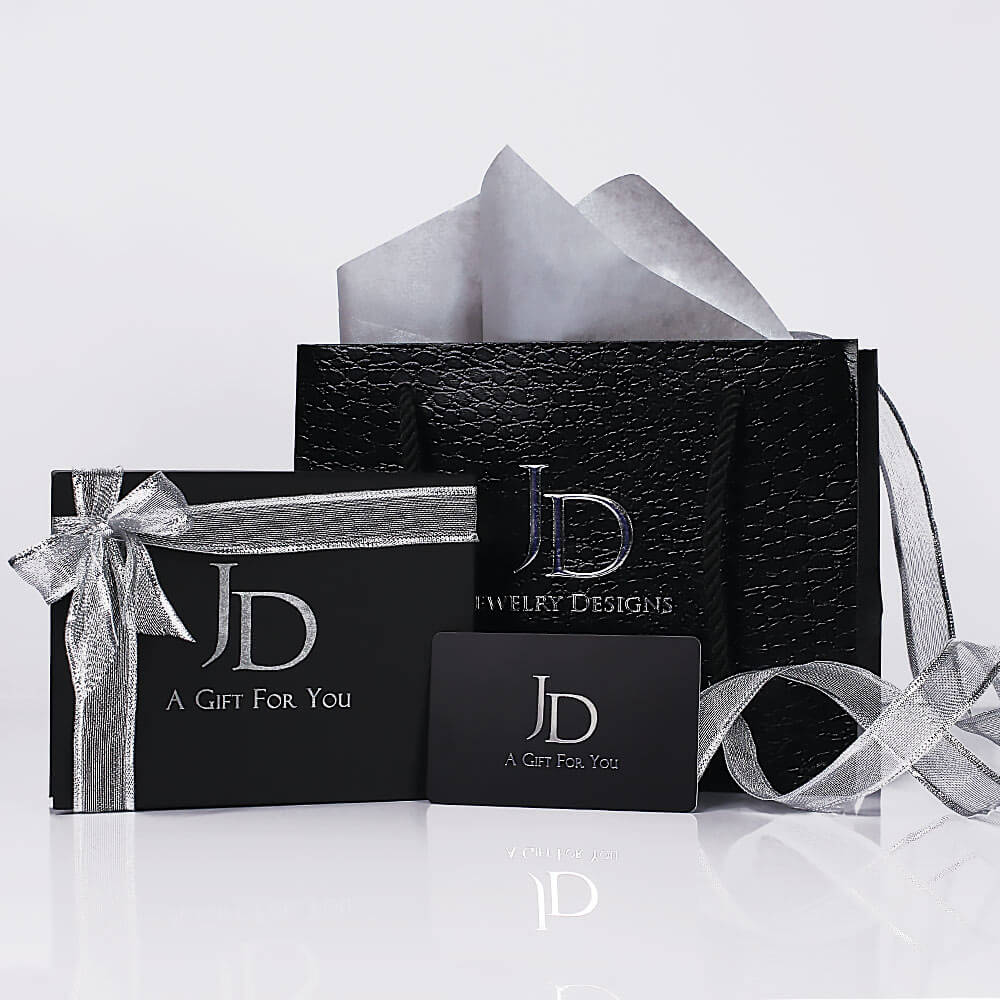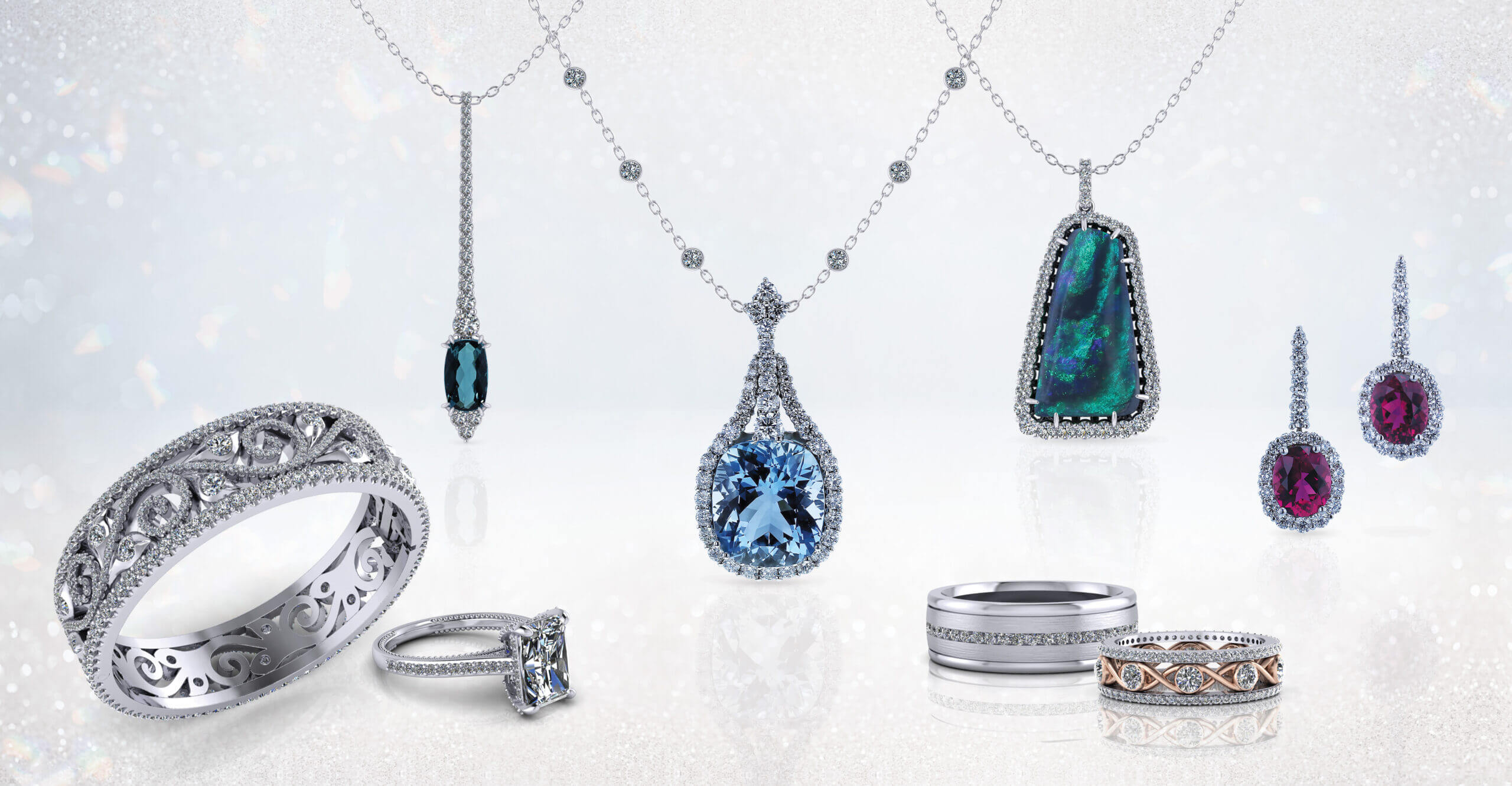Jewelry Polishing

This article relates to jewelry polishing and finishing from the perspective of people creating fine jewelry. If you would like to find out about polishing jewelry that you already own, you can proceed to the jewelry cleaning section of our site.
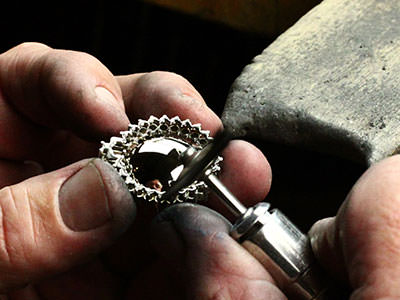
Artisans skilled at jewelry polishing use a wide array of machines and hand held tools to remove uneven or rustic surfaces from gold, platinum or silver. Using wheels and bits charged with abrasive compounds the polishers shape and contour surfaces. The next stages include lighter polishing mediums that reveal a brilliant shine. Through years of experience a jeweler develops jewelry polishing techniques that seem to magically unlock the beauty of precious metal.
The polishing and finishing process for most jewelry begins with rough precious metal forms created during jewelry casting. Rustic gold and platinum castings have a crude finish and lack luster when they are created.
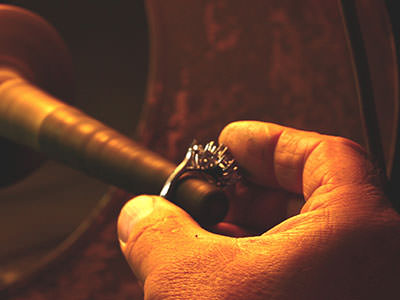 The beautiful models rendered by a Cad Jewelry Design team bear little resemblance to raw casting that a jewelry polisher has to work with at the outset of a project.
The beautiful models rendered by a Cad Jewelry Design team bear little resemblance to raw casting that a jewelry polisher has to work with at the outset of a project.
These rough castings are presented to the polishers in a cluster on a gold or platinum tree. The polishers will cut each individual piece of jewelry from the host tree and grind away the connection points known as sprues. At this stage the precious metal castings are tumbled in 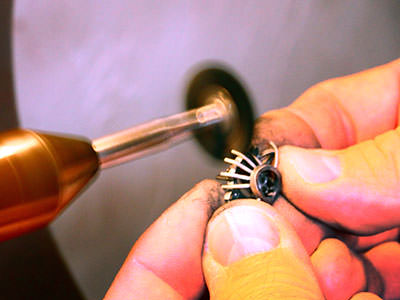 magnetic or rotary tumblers with various mediums to burnish the rutty surface and level out the metal.
magnetic or rotary tumblers with various mediums to burnish the rutty surface and level out the metal.
After tumbling, jewelers deburr them with files and hand held rotary tools. Starting with stone wheels and bits that are coarse, they descend to tools with finer grits until deep scratches and unwanted shapes are removed. They slowly contour the metals surface to achieve an even satin finish that flows with the lines of the design.
In the next stage of jewelry 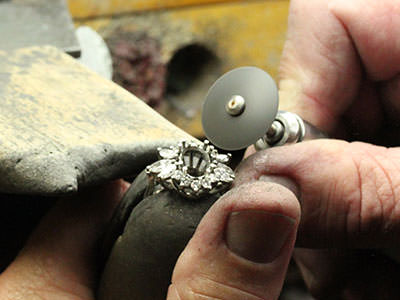 polishing the metal will begin to take on a shine as rotary wheels made from felt and soft muslin are impregnated with less abrasive compounds and worked as they are buff the metals surface. While rotating on hand-held flexible shafts, or full upright polishing machines, the high speed wheels are then charged with less invasive compounds spin a brilliant finish into the precious metal to bring out the desired luster.
polishing the metal will begin to take on a shine as rotary wheels made from felt and soft muslin are impregnated with less abrasive compounds and worked as they are buff the metals surface. While rotating on hand-held flexible shafts, or full upright polishing machines, the high speed wheels are then charged with less invasive compounds spin a brilliant finish into the precious metal to bring out the desired luster.
Once the desired polish is achieved, various textures and finishes can be applied to specified surfaces of jewelry to add character or enhance the design. These finishes can range from simple satin finishes applied with emery or sand blasting, to patterns with more depth like Florentine crosshatching and patterns cut by a 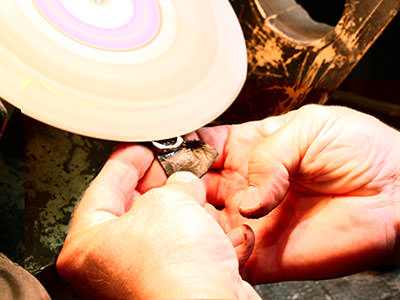 jeweler’s graver.
jeweler’s graver.
When all of the jewelry polishing is complete, and all surfaces have been thoroughly cleaned, a jeweler can apply any chemical finishes needed such as rhodium plating, or antique patinas. In short, it is the artistic skills of the jewelry polishing team that brings out the shine and lustrous finish that make gold and platinum so enamoring.



